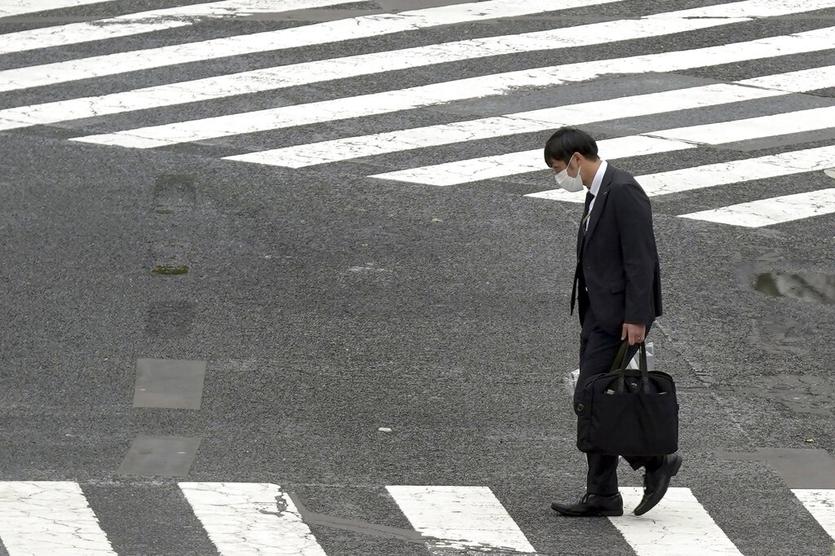 A man wearing a protective mask to help curb the spread of the coronavirus walks along a pedestrian crossing on April 20, 2022, in Tokyo. (EUGENE HOSHIKO / AP)
A man wearing a protective mask to help curb the spread of the coronavirus walks along a pedestrian crossing on April 20, 2022, in Tokyo. (EUGENE HOSHIKO / AP)
TOKYO - Japan's economy shrank for the first time in two quarters in the first three months of the year as COVID-19 curbs hit the service sector and surging commodity prices created new pressures, raising concerns about a protracted downturn.
The decline presents a challenge to Prime Minister Fumio Kishida's drive to achieve growth and wealth distribution under his "new capitalism" agenda, stoking fears of stagflation - a mix of tepid growth and rising inflation.
The decline presents a challenge to Prime Minister Fumio Kishida's drive to achieve growth and wealth distribution under his "new capitalism" agenda, stoking fears of stagflation - a mix of tepid growth and rising inflation
The world's No. 3 economy shrank at an annualized rate of 1.0 percent in January-March from the previous quarter, gross domestic product (GDP) figures showed, slower than a 1.8 percent contraction expected by economists. That translated into a quarterly drop of 0.2 percent, the Cabinet Office data showed, versus market forecasts for a 0.4 percent drop.
The weak reading may pressure Kishida to release even more stimulus with upper house elections penciled in for July 10, following the 2.7 trillion yen ($20.86 billion) in extra budget spending compiled on Tuesday.
"The economy will return to growth in the coming quarters but it won't be a dramatic recovery, leaving the possibility of further spending wide open as elections draw near," said Hiroshi Shiraishi, senior economist at BNP Paribas Securities.
Private consumption, which makes up more than half of the economy, slightly fell, versus a 0.5 percent fall expected by economists, the data showed.
ALSO READ: Sharp fall in yen weighs on Japan's economy
Many analysts expect Japan's economy to rebound in coming quarters, helped by easing coronavirus curbs.
However, doubts remain over whether recovery will be V-shaped, with surging energy and food prices boosted by the weak yen capping consumption.
Japan's export-reliant economy got little help from external demand, with net exports knocking 0.4 percentage point off GDP growth, a tad larger than the negative contribution of 0.3 percentage point seen by economists.
The weak yen and surging global commodity prices inflated imports, overwhelming export gains.
READ MORE: Japan yen hits 20-year low vs US dollar on concerns over rate gap
Capital spending rose 0.5 percent versus an expected 0.7 percent increase, following a 0.4 percent increase in the previous quarter.
"We expect GDP growth to disappoint across 2022 due to the hit to household income from higher inflation and signs that elderly consumers remain wary of catching the virus," Tom Learmouth, Japan economist at Capital Economics, wrote in a note.


